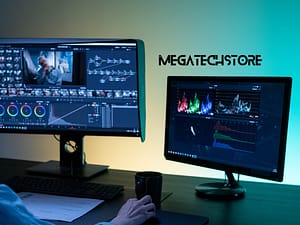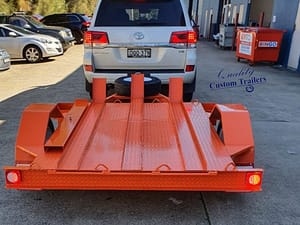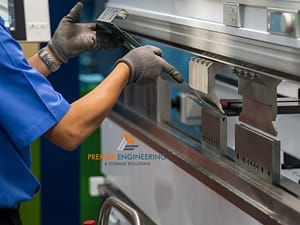Selecting the right shelving units is a critical decision for any business, regardless of its size or industry. The right shelving system not only optimizes your storage space but also enhances the efficiency of your operations, improves space management, and contributes positively to the overall aesthetics of your business environment. Whether you’re running a bustling retail store, a busy warehouse, or a formal office setting, the type of shelving you choose can significantly impact your daily operations and the perception of your brand.
Brief Overview of the Importance of Selecting the Right Shelving Units for Different Types of Businesses
Every business has unique needs and challenges when it comes to storage and organization. For retail businesses, shelving units are not just storage solutions; they are crucial for product display and can influence customer purchasing behavior. In warehouses, the focus shifts to durability and weight capacity, aiming to maximize space and improve logistics. Office environments, on the other hand, require shelving units that support document organization, supply storage, and sometimes, even aesthetics. Choosing the right shelving unit becomes an exercise in balancing functionality, space utilization, and design.
Explanation of How the Right Shelving Can Impact Efficiency, Space Management, and Aesthetics
Efficiently designed shelving units streamline operations by reducing clutter, improving item retrieval times, and optimizing inventory management. They also play a vital role in space management, turning unused vertical space into valuable storage areas. Aesthetically, well-chosen shelving units can elevate the look and feel of your space, reinforcing your brand identity and making your business more inviting to customers and employees alike.
Understanding Your Business Needs
Before diving into the myriad of shelving options available, it’s crucial to assess your specific business needs. This assessment will guide you in making informed decisions that align with your operational requirements, spatial constraints, and financial plans.
Identifying Your Storage Requirements: Evaluating Inventory Size, Weight, and Accessibility Needs
Begin by taking stock of what you need to store. Consider the size, weight, and volume of your inventory or items. Heavy goods will require robust shelving with high weight capacity, while smaller items might need shelving with more compartments or closer spacing between shelves for efficient storage. Accessibility is another key factor; items that are frequently used should be easily reachable, necessitating a different shelving design than that used for long-term storage.
Strategies for Maximizing Retail, Warehouse, or Office Space
Maximizing your available space without sacrificing accessibility or efficiency requires strategic planning. Utilizing vertical space with taller shelving units can dramatically increase your storage capacity. For retail spaces, consider shelving that offers flexibility for displaying various products attractively. Warehouses benefit from industrial shelving designed for pallet storage, which can be accessed by forklifts. In offices, modular shelving can adapt to changing storage needs and help keep the space organized and free of clutter.
Balancing Quality and Cost to Find the Best Value for Your Business
Budgeting for shelving units involvez more than just the initial purchase cost. Consider the durability and lifespan of the shelving — investing a bit more upfront for higher-quality materials can reduce long-term replacement costs. Additionally, consider the maintenance requirements and the ease of adjusting or expanding the shelving units in the future. Balancing these factors against your budget will help you find the best value for your investment.
Types of Commercial Shelving Units
Understanding the different types of shelving units available can help you choose the best option for your specific business needs. Each type offers unique features suitable for various applications, from displaying merchandise to storing bulky warehouse items.
Highlighting Shelving Units that Enhance Product Visibility and Customer Experience
Retail shelving should do more than just hold products; it should showcase them. Options range from glass shelving that adds a touch of elegance, to adjustable metal or wood shelves that can be rearranged to fit different products or promotional displays. Consider shelving with integrated lighting to highlight products and attract customer attention.
Focusing on Durability, Weight Capacity, and Space Efficiency
For warehouses, selecting shelving units that can withstand heavy loads and frequent use is paramount. Industrial shelving systems such as pallet racks, cantilever racks, and bulk storage shelves are designed to accommodate heavy items, maximize vertical space, and support efficient inventory management practices.
Discussing Modular and Customizable Options for Office Supplies, Documents, and Display
Office environments benefit from versatile shelving solutions that can store a wide range of items, from documents and office supplies to decorative items. Modular shelving offers the flexibility to expand or reconfigure storage as needs change, while custom shelving can be tailored to fit specific spaces and design requirements, making the most of every inch of your office space.
Material and Design Options
When choosing shelving for your businesss, the material and design play crucial roles not only in functionality but also in the overall appearance and feel of your space. Each material has its unique advantages and potential drawbacks, and the dezign of the shelving should align with your business’s aesthetic and brand identity.
Pros and Cons of Metal, Wood, Plastic, and Composite Materials for Commercial Shelving
- Metal Shelving: Known for its durability and strength, metal shelving is ideal for warehouses and retail environments that require sturdy, long-lasting solutions. It’s resistant to damage and easy to clean, although it can be prone to rust in certain environments unless treated.
- Wood Shelving: Offers a classic, warm aesthetic that’s perfect for retail spaces and offices. While it provides a high-end look, wood is susceptible to wear, tear, and moisture damage over time.
- Plastic Shelving: A cost-effective, lightweight option suitable for light storage in offices or dry storage areas. Plastic shelving can be less durable and may not support heavy loads well.
- Composite Materials: Often a blend of wood and plastic, composite shelving offers a balance of durability and aesthetic appeal, resistant to many forms of damage. However, it may not carry the same load as metal or the same aesthetic appeal as real wood.
How to Choose Shelving Units That Complement Your Business’s Decor and Branding
Consider shelving as part of your business’s visual merchandising or office design strategy. The style, color, and arrangement should align with your brand identity and contribute positively to the atmosphere you wish to create. For example, minimalist designs can underscore a modern, clean brand image, while ornate wood shelving can evoke a sense of tradition and warmth.
The Possibilities for Customizing Shelving Units to Fit Specific Business Needs and Spaces
Custom shelving solutions can be designed to fit unique spaces or serve specific functions, such as displaying products in an eye-catching manner or fitting into irregularly shaped areas. Consider adjustable shelving for flexibility in display or storage, and incorporate branding elements such as colors or logos for a cohesive look.
Installation and Maintenance
Proper installation and regular maintenance are key to maximizing the lifespan and effectiveness of your shelving units.
When to Hire a Professional for Shelving Installation and When DIY is Sufficient
For complex systems, heavy-duty shelving, or when precision is critical, professional installation ensures safety and stability. DIY can be an option for simpler, lightweight shelving solutionz, provided you have the right tools and skills. Always assess the risk and potential cost of errors before deciding.
Routine Maintenance Tips to Extend the Life of Your Shelving and Keep It Looking Great
Regular checks for stability, tightening any loose screws or bolts, and cleaning are essential maintenance tasks. For metal shelving, watch for and promptly treat any signs of rust or corrosion. Wood shelves should be kept dry and cleaned with appropriate wood care products to avoid damage.
Safety and Compliance
Ensuring that your shelving units are safe and comply with local regulations is paramount to protect your staff, customers, and business.
Ensuring Your Shelving Units Meet Industry Standards and Safety Regulations
Adhere to weight limits, secure shelving units to walls or floors where necessary, and use appropriate materials and designs for the intended load and usage. Regular inspections for damage or potential hazards can prevent accidents.
Designing Your Space to Be Accessible to Employees and Customers, Including Considerations for the Differently Abled
Ensure aisles are wide enough for easy navigation, and items are placed at accessible heights. Consider ergonomic principles in the design of workspaces to minimize strain for employees who interact with shelving regularly.
Future-Proofing Your Shelving Investment
Investing in shelving is not just about meeting your current needs but also about anticipating the growth and changes your business will experience. Future-proofing your investment means choosing solutions that are adaptable and can evolve alongside your business.
Choosing Shelving That Can Grow and Change with Your Business
Adaptable and scalable shelving solutions ensure that as your business grows, your storage capabilities can grow with it without requiring a complete overhaul. Look for shelving systems that allow for easy reconfiguration, height adjustment, and expansion. Modular systems are particularly beneficial in this regard, offering the flexibility to add more units or reorganize layouts as your storage needs change. This adaptability is crucial for staying efficient and organized during growth phases or when adjusting to market demands.
A Look at Emerging Trends and Technologies in Commercial Shelving
The shelving induztry is not static; it continuously evolves with advancements in materials, design, and technology. Innovations such as integrated technology for inventory management, where RFID tags on products interact with sensors on the shelves, can offer real-time inventory tracking and insights. Smart shelving units can also adjust their height or layout automatically based on predefined settings or needs. Staying abreast of these trends and considering how they could benefit your business is essential for future-proofing your investment.
Conclusion
Selecting the right shelving units for your business is a decision that impacts not just your current operational efficiency, space management, and aesthetics but also your long-term flexibility and growth potential.
The time and effort invested in selecting the right shelving solution cannot be understated. It’s a foundational element that supports the operational efficiency, safety, and aesthetic appeal of your business. By carefully considering your options, staying informed about the latest innovations, and choosing shelving that can adapt to your business’s evolving needs, you position your business for success now and well into the future.












